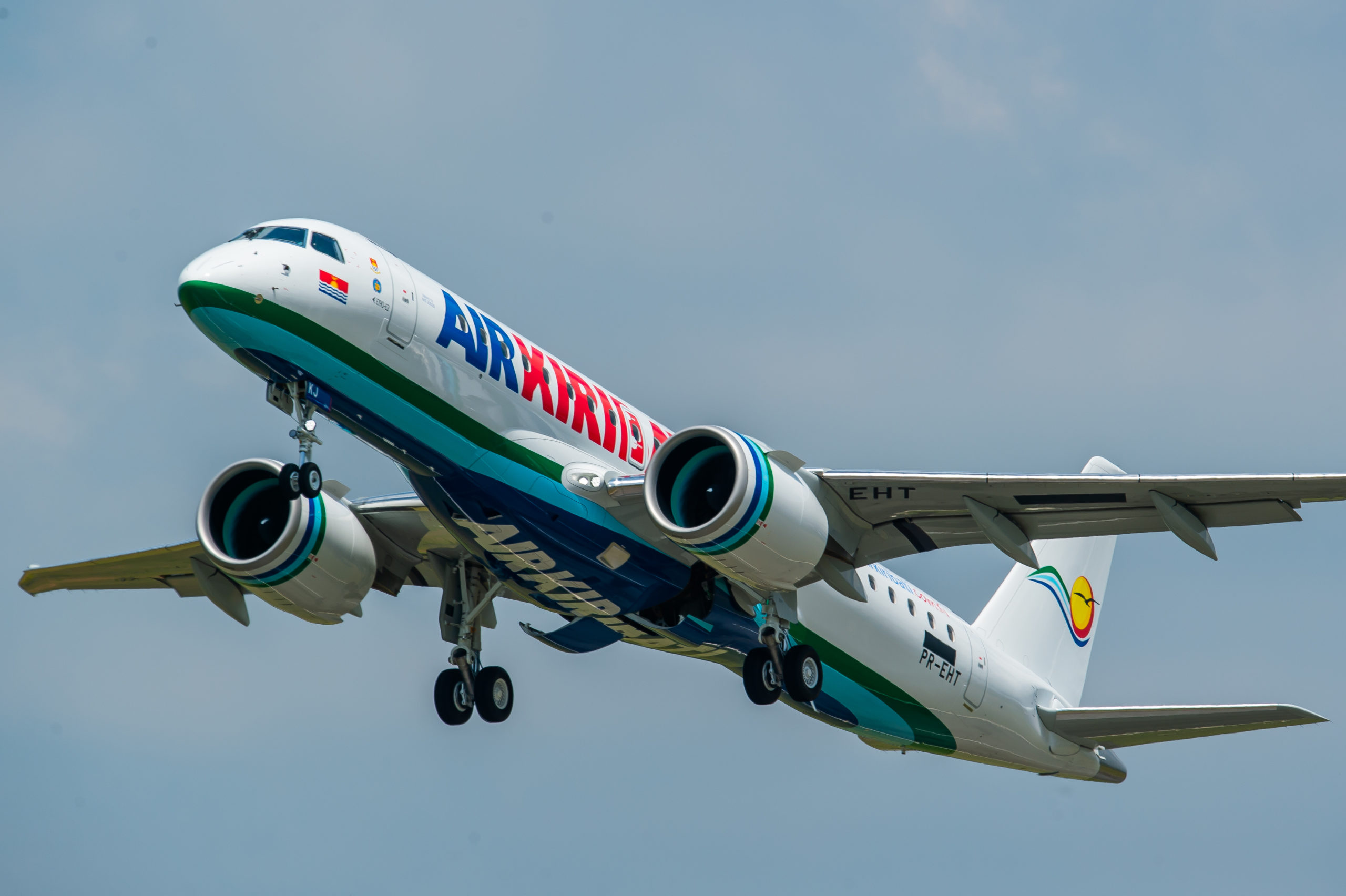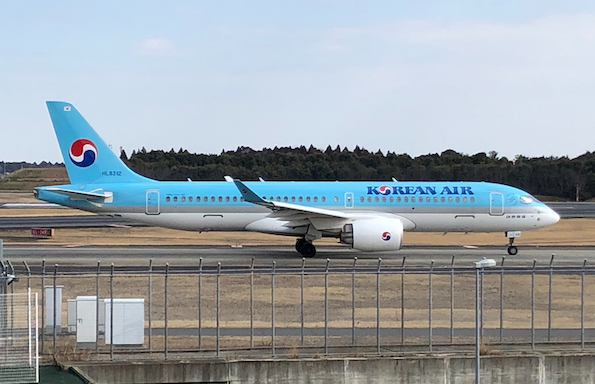
Even in an industry totally shaken by a global pandemic, some things don’t appear to be changing as a post-Covid world emerges. One of those is that the proportion of global aircraft deliveries scheduled to go to Asia remains the largest of any region.
It has to be said, however, that the number of crossover narrowbody jets – such as the Airbus A220 and Embraer E-Jets E2 families – among those orders is a long way from challenging the figures rattled up by the regular single-aisle types, the Airbus A320neo and Boeing 737 MAX families. Both manufacturers though, expect some change to that scenario.
Embraer’s most recent forecast covering 2020-29 modestly expects the fleet of jets up to 150 seats across Asia and including China to grow from 800 to 2,020 over that period (although it should be noted that this forecast was kept at 10 years rather than the 20 years most forecasts cover). Raul Villeron, VP sales and marketing Asia-Pacific for Embraer Commercial Aviation, explains where the company believes those orders will come from.
“We are seeing airlines introducing E-Jets in the Asia Pacific region, in countries such as Australia, Vietnam, Myanmar and Mongolia, mostly for domestic operations,” the VP reports. “We also see that on top of a large fleet of E-Jets currently flying in China, we expect growth in crossover jet deployments because the segment supports China’s diversification strategy to connect the eastern and western regions. This also offers rightsized solutions to connect across borders, along the “Belt and Road” (B&R) – and beyond – via Kazakhstan for the land component of the B&R, as well as Cambodia in the south for the sea component.
“In India, a significant opportunity exists to connect, for the first-time, hundreds of second and third tier cities to larger hubs, as well as adding services to underserved markets,” he continues. There will have to better execution of the business plan though, as previous attempts by Paramount Airways and Air Costa floundered.
“Indonesia, the largest archipelago nation in the world, has a latent need to connect islands to primary and secondary hubs, and to prepare its infrastructure to serve the new capital being planned in Kalimantan, Borneo,” Villeron observes. “There are currently around 100 legacy aircraft in operation in Australia with similar capacity and range of the E-Jets E2, that will soon require replacement, presenting significant opportunities including the chance to lower fuel burn, have less noise, higher reliability and improved green credentials.
“In Japan, where a large fleet of E-Jets already operates, more fuel-efficient crossover jets will be instrumental in adjusting local fleets to a more rational gauge. A significant percentage of the large narrowbodies deployed there domestically are inefficient and/or oversized. Therefore, across the whole Asia-Pacific, we continue to see a strong fleet of crossover jets being more attractive than larger narrowbodies to serve domestic, cross border and islands traffic for many years to come,” Villeron remarks.
As a result of the Covid-19 pandemic, Airbus has not released a Global Market Forecast (GMF) since September 2019. That document placed the A220 and A320 families into one category of ‘Small’ aircraft, so little can be gauged about the A220’s own predicted sales figures.

“For some, the impact of COVID on aviation was so deep that those strategies of aggressive growth and the rush for market share – employed by many operators in Asia – had to be revaluated. Airlines CEOs in Asia, and indeed around the world, are recognizing that this is an opportunity to rethink, recalibrate and re-strategize the financing of their fleets,” he explains.
According to a company spokesperson, Airbus is still evaluating the impact of the pandemic on the various market sectors and intends to release its new GMF before the end of the year. However, the company says it sees strong demand in the region for crossover jets and particularly its own type, “due to its new levels of efficiency, wider cabin and longer range capability”.
The spokesperson also notes, “The A220's range exceeds that of competing products and enables non-stop service in comfort on flights of up to six or seven hours. This covers the domestic networks of the largest countries in the region and also offers the ability to open new services on secondary international routes, such as between North and South East Asia or between Asian cities and the Pacific Islands.”
As noted, very large orders for crossover jets in Asia have not yet been forthcoming, seen by some as a perception challenge which needs to be overcome for airlines to move from the A320/737 types and to right-size with crossover jets. But the past 18 months in air transport seems to have been a catalyst for a change of mindset.
“The pandemic certainly allowed airlines to consider better options to improve connectivity and profitability in the region,” Villeron declares. “Asia has seen record rates of growth in the last decade and airlines’ strategy was concentrated in increasing capacity, airport slots, and lower the unit cost-per-seat-kilometer. While this approach was relevant in the pre-Covid world, when we look forward into the post-Covid era, we see a strong focus on fleet rationalization and lower cash costs, while maintaining connectivity.
“Airlines cannot afford to give up strategic markets, and the single fleet mindset is not sustainable nor appropriate in the new world,” he argues. “The only way to go forward is to match equipment to the demand and right size where needed.
“Regarding networks, previously point-to-point connections were used as the fastest way to enable growth. However with border closures and fewer airports being designated as entry points, there is a need to find a more efficient approach to serve large hubs in the short term. It requires a mindset change for many operators in Asia, but the hub-and-spoke system will be essential to improve connectivity efficiency in the region and to allow airlines to improve results with capacity discipline as ways to manage yields and costs.
“The Asia Pacific region is huge, with thousands of small- and medium-sized cities, as well as mega cities. Once the pandemic subsides, many opportunities to connect secondary cities will return and crossover jets will be the most efficient tool improve network connectivity,” Villeron notes. “In this context, crossover jets are the perfect tool to complement single type fleets and help airlines to build a more flexible and robust fleet strategy. That will allow more hub-and-spoke deployment alongside point-to-point, improving market yields and lowering costs.”
Getting more crossover jets into Asia does not simply depend on selecting the types, financing is also needed, whether for purchases or lease deals. Airlines such as AirAsia and IndiGo have placed big orders for the larger narrowbody types in recent years, confident that there would be the financial appetite in the market when those aircraft came to be delivered. Those finance houses now need to be convinced of the value of crossover jets, which Embraer’s Villeron believes is beginning to happen.
“For some, the impact of COVID on aviation was so deep that those strategies of aggressive growth and the rush for market share – employed by many operators in Asia – had to be revaluated. Airlines CEOs in Asia, and indeed around the world, are recognizing that this is an opportunity to rethink, recalibrate and re-strategize the financing of their fleets,” he explains.
“Some airlines in Asia have been raising cash with their fleet by doing sale-and-leaseback deals, while others have added right-sized aircraft to their fleets by other means like dry leases, wet leases/ACMI agreements, as well as issuing equity with the specific purpose of fleet expansion and adjustment.
“To win the next decade, fleets will need to be rebalanced with capacity deployment focused on profitability, not market share. We believe airlines in Asia are starting to recognize that crossover jets will play a significant role in achieving that target,” Villeron concludes.
The next set of forecasts from the two manufacturers are likely to be the tell-tale sign of whether the market in Asia really has crossed over.





